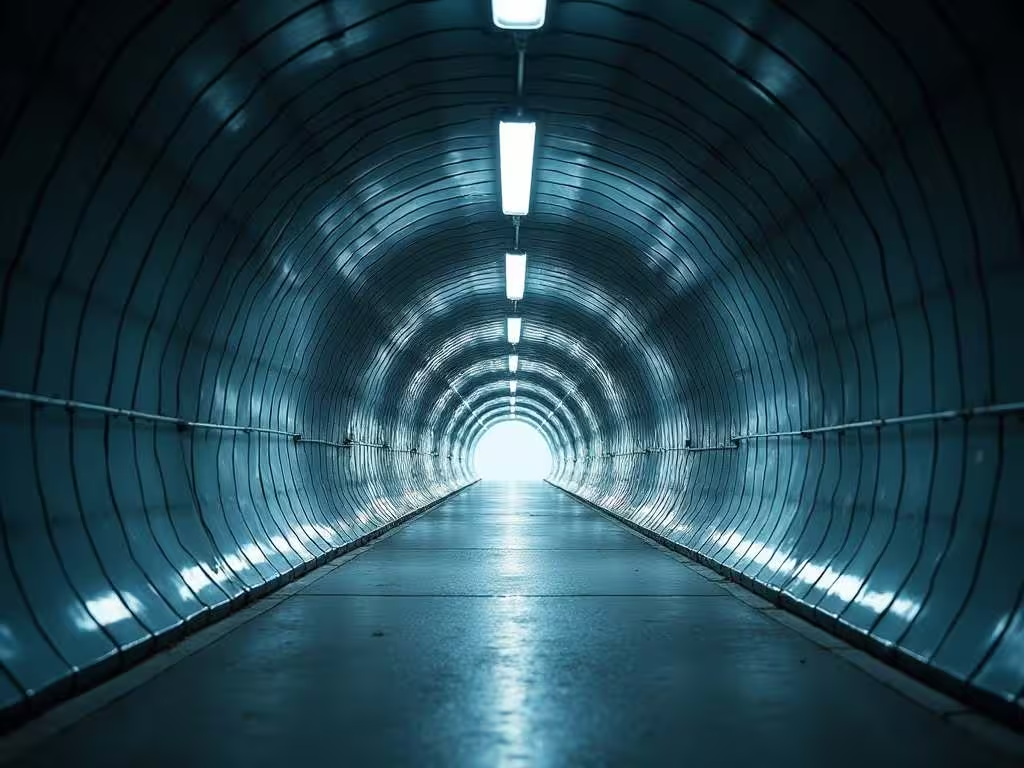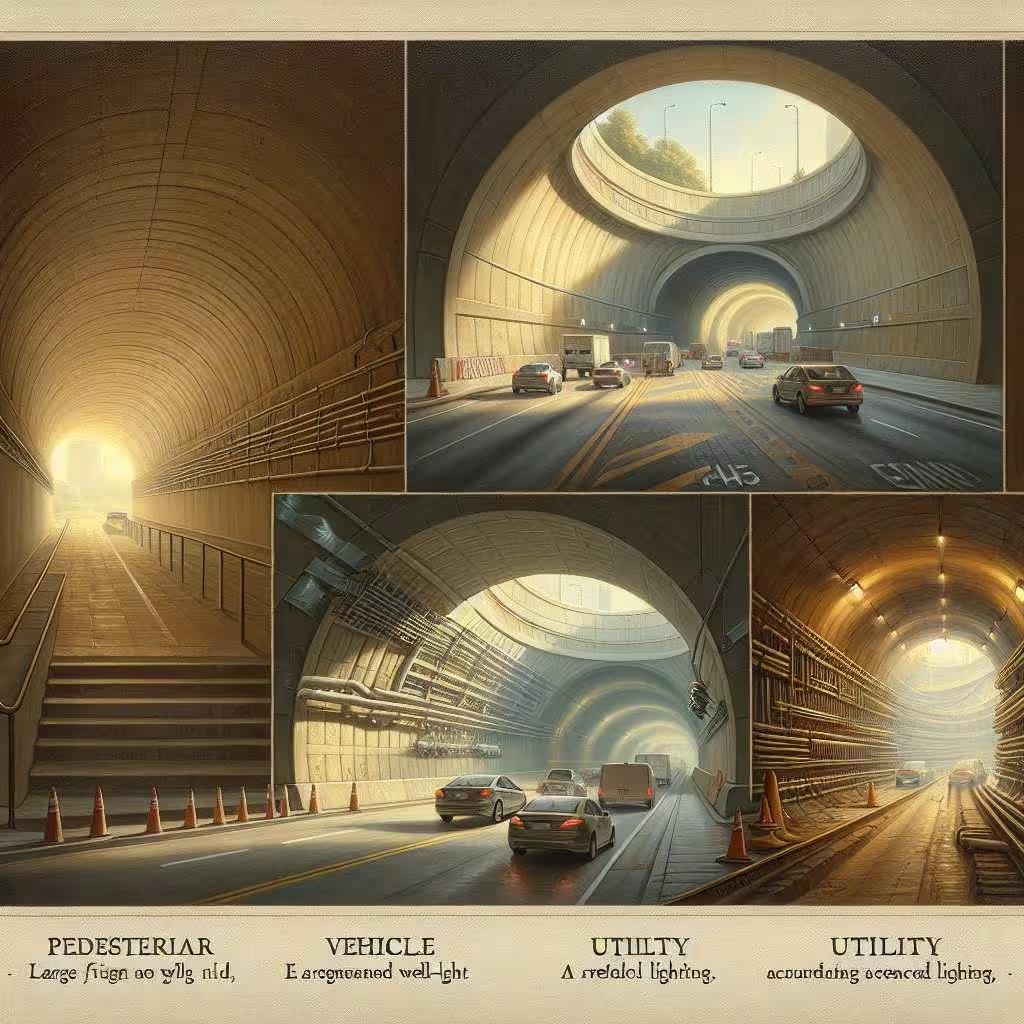As a homeowner, I’ve discovered that tunnels can transform our living spaces, offering unique solutions for storage, access, and even entertainment. They tap into our innate desires for security, creativity, and connection with our environment. Whether you’re looking to add value to your property or create a one-of-a-kind feature, understanding the world of private property tunnels is crucial. This tunnel buyer’s guide will help you navigate the complexities of tunnel selection, ensuring you make an informed decision that enhances your lifestyle and property.
Reader Disclosure
Jump to:
Understanding Tunnels for Private Properties
Tunnels for private properties are underground passages that serve various purposes, from practical utility access to luxurious amenities. As a homeowner who has researched and implemented tunnel systems, I can attest to their transformative potential.
Types of Tunnels
There are several types of tunnels suitable for private properties. Here are three popular options:
- Utility Tunnels: These tunnels house essential services like water pipes, electrical cables, and HVAC systems. They provide easy access for maintenance and repairs without disrupting your landscape.
- Access Tunnels: Designed to connect different areas of your property, access tunnels can link your main house to outbuildings, garages, or even neighboring properties (with proper permissions).
- Recreational Tunnels: These tunnels are built for entertainment purposes, such as wine cellars, underground theaters, or secret passageways for a touch of mystery and excitement.

Factors to Consider When Buying a Tunnel
1. Purpose and Functionality
Before diving into tunnel construction, it’s crucial to define your tunnel’s primary purpose. Are you looking for improved utility management, a unique entertainment space, or a secure storage area? Your tunnel’s purpose will guide decisions on size, design, and features.
2. Legal and Regulatory Requirements
Constructing a tunnel on your property involves navigating various legal and regulatory hurdles. You’ll need to:
- Obtain necessary permits from local authorities
- Comply with zoning laws and building codes
- Consider environmental regulations
- Consult with utility companies to avoid interference with existing infrastructure
3. Geological Considerations
The feasibility of your tunnel project largely depends on your property’s geological conditions. As someone who’s gone through this process, I recommend:
- Conducting a thorough geological survey
- Assessing soil composition and stability
- Evaluating groundwater levels and potential for flooding
- Considering seismic activity in your area
4. Budget and Financing
Tunnel construction can be a significant investment. Consider the following costs:
- Design and engineering fees
- Construction materials and labor
- Specialized equipment rental
- Permits and inspections
- Ongoing maintenance and operation costs
Explore financing options such as home equity loans or construction loans to fund your project.
5. Design and Aesthetics
Your tunnel should complement your property’s overall design. Consider:
- Entrance and exit points
- Interior finishes and lighting
- Ventilation systems
- Integration with existing structures
Choosing a Tunnel Construction Method
Based on my experience and research, here are the most common tunnel construction methods for private properties:
- Cut-and-Cover: This method involves excavating from the surface, constructing the tunnel, and then covering it. It’s suitable for shallow tunnels and areas with stable soil conditions.
- Boring: For deeper tunnels or to minimize surface disruption, boring machines can create tunnels underground. This method is more complex but can be less disruptive to your property’s landscape.
- Sequential Excavation Method (SEM): Also known as the New Austrian Tunneling Method (NATM), this approach involves excavating small sections at a time and immediately supporting them. It’s versatile and can adapt to various ground conditions.
Safety and Maintenance
Ensuring the safety and longevity of your tunnel is paramount. Consider:
- Regular structural inspections
- Proper ventilation systems
- Waterproofing and drainage solutions
- Emergency exits and safety equipment
- Lighting and power backup systems
Environmental Impact
As a responsible property owner, it’s essential to consider the environmental impact of your tunnel project. Implement sustainable practices such as:
- Using eco-friendly construction materials
- Minimizing disruption to local flora and fauna
- Implementing energy-efficient lighting and ventilation systems
- Considering rainwater harvesting or geothermal energy integration
Hiring Professionals
Building a tunnel requires specialized expertise. When selecting professionals:
- Choose experienced tunnel engineers and contractors
- Verify licenses and insurance
- Request and check references
- Obtain detailed proposals and contracts

People Also Ask
How much does it cost to build a tunnel on private property?
Costs vary widely depending on factors like size, depth, and purpose. A small utility tunnel might cost $50,000-$100,000, while larger, more complex tunnels can exceed $1 million.
Are tunnels on private property legal?
Generally, yes, but you must comply with local zoning laws, building codes, and obtain necessary permits. Always consult with local authorities before starting your project.
How long does it take to build a tunnel?
Construction time depends on the tunnel’s size and complexity. A small utility tunnel might take 1-3 months, while larger projects can take 6-12 months or more.
Conclusion
Investing in a tunnel for your private property can offer unique benefits, from practical utility management to creating extraordinary living spaces. By carefully considering factors like purpose, legal requirements, geological conditions, and construction methods, you can ensure a successful tunnel project that enhances your property’s value and functionality. Remember to prioritize safety, sustainability, and professional expertise throughout the process. With proper planning and execution, your tunnel can become a valuable and exciting addition to your property.
Show & Tell
We’d love to hear your thoughts about these ideas! Simply click the link to head over to your favorite platform and add your comments about this post there. We’d like to know about your insights, questions, or just saying hi.
Disclosure
Our content is reader-supported. This means if you click on some of our links, then we may earn a commission. Commissions do not affect our editor’s opinions or evaluations. Learn more about our editorial process.

About the Editorial Staff
The Curvspace editorial team comprises a diverse group of experts on intermediate and threshold spaces in homes and workplaces. Architects and interior designers, civil engineers and artists, environmental and behavioral psychologists, sociologists and anthropologists. All collaborate to create helpful content, that explores the full potential of these often-overlooked areas to enhance our daily lives.


